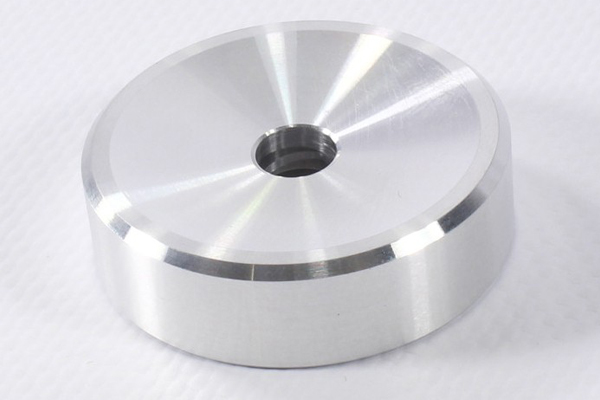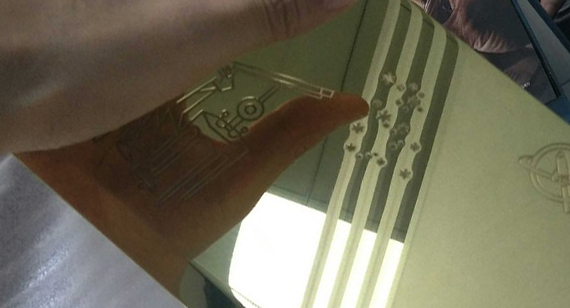15 years one-stop China custom CNC machining parts factory

Hey there I’m VMT Sam!
With 25 years of CNC machining experience we are committed to helping clients overcome 10000 complex part-processing challenges all to contribute to a better life through intelligent manufacturing. Contact us now
 250 |
Published by VMT at May 20 2024
250 |
Published by VMT at May 20 2024
I. Introduction
In the field of CNC machined parts manufacturing, aluminum, as a lightweight and high-strength metal material, is widely used in aerospace, automotive, electronics, and other industries. However, aluminum surfaces often exhibit roughness and irregularities, necessitating surface treatment processes such as polishing to improve surface smoothness and aesthetics. This article will provide a detailed introduction to aluminum polishing, including the concept of polishing, which aluminum products require polishing, the best methods for polishing aluminum parts, how to achieve a mirror finish on aluminum, surface passivation and polishing, polishing techniques for aluminum, and the benefits of polishing.
II. What is Polishing?
Polishing refers to a machining method that reduces surface roughness and achieves a bright, smooth surface by using mechanical, chemical, or electrochemical processes. Polishing mainly utilizes polishing tools and abrasive particles or other polishing media to modify the surface of the workpiece. The purpose of polishing is to obtain a smooth surface or a mirror-like gloss, sometimes also used to eliminate gloss. In the manufacturing process of aluminum CNC machined parts, polishing is an important means to improve product quality and appearance.

III. Which Aluminum Products Require Polishing?
Aluminum products are widely used in various industries, and many products require polishing treatment. Here are some common aluminum products that require polishing:
Aerospace components: such as aircraft skins, wings, fuselages, etc., require high gloss and low surface roughness to improve flight performance and aesthetics.
Automotive components: such as car bodies, engine covers, wheels, etc., polishing can improve their appearance quality and corrosion resistance.
Electronic product housings: such as mobile phones, computers, etc., polishing can make their surfaces smoother and more beautiful, enhancing product grades.
Decorative aluminum products: such as aluminum furniture, lamps, artworks, etc., polishing can make their surfaces more beautiful and high-end.
IV. Best Methods for Polishing Aluminum Parts
There are various methods for polishing aluminum CNC machined parts. Here are some common polishing methods and their characteristics:
Mechanical polishing: Using grinding machines, polishing machines, and other mechanical equipment to process the surface of aluminum materials, removing surface irregularities and burrs through the rolling and cutting action of abrasive particles. Mechanical polishing is suitable for aluminum products of various shapes but requires attention to the hardness and speed of the polishing wheel, as well as the selection of abrasive material granularity and polishing time parameters.
Chemical polishing: Removing the oxide layer and burrs on the surface of aluminum materials through chemical corrosion, making the surface smooth and smooth. Chemical polishing is suitable for aluminum products with simple shapes but requires attention to controlling the concentration, temperature, and time of the polishing solution to avoid excessive corrosion and insufficient surface roughness.
Electrochemical polishing: Using the principle of electrolysis to polish the surface of aluminum materials. Electrochemical polishing can achieve high-speed polishing at relatively low temperatures, and the surface quality after polishing is high. However, electrochemical polishing equipment is relatively complex, and the operation is more difficult.
When choosing a polishing method, it is necessary to consider factors such as the shape, size, surface quality requirements, and production cost of aluminum products comprehensively. For aluminum CNC machined parts with complex shapes and high dimensional accuracy requirements, it is recommended to use mechanical polishing or electrochemical polishing; for aluminum products with simple shapes and low surface quality requirements, chemical polishing or simple procedures in mechanical polishing can be selected.
V. How to Achieve a Mirror Finish on Aluminum?
Achieving a mirror finish on aluminum requires using more advanced polishing techniques and equipment. Here are some common methods for achieving a mirror finish on aluminum:
Precision mechanical polishing: Using high-precision grinding and polishing machines to process the surface of aluminum materials multiple times, gradually increasing the surface smoothness by reducing the granularity of abrasive particles and the speed of polishing wheels. During polishing, attention should be paid to controlling polishing pressure and time parameters to avoid excessive polishing and surface scratches.
Ultra-precision polishing: Using ultra-precision processing equipment and technology to process the surface of aluminum materials, such as ion beam polishing, laser polishing, etc. These technologies can achieve nanometer-level machining accuracy and surface smoothness, suitable for aluminum products with extremely high surface quality requirements.
When polishing aluminum to a mirror finish, it is necessary to choose the appropriate polishing method and equipment and strictly control the polishing process parameters. Meanwhile, surface passivation treatment is required for polished aluminum products to improve their corrosion resistance and stability.

VI. Surface Passivation and Polishing
Surface passivation is an important means to improve the corrosion resistance of aluminum materials. During the polishing process, the surface of aluminum materials may be damaged or oxidized to some extent, so surface passivation treatment is needed to restore their corrosion resistance. Surface passivation can be achieved through chemical or electrochemical methods, such as anodizing, chromate passivation, etc. After polishing aluminum CNC machined parts, surface passivation treatment can effectively improve their service life and stability.
VII. Polishing Techniques for Aluminum
When polishing aluminum CNC machined parts, attention should be paid to the following techniques:
Choose the right polishing wheel and abrasive: The hardness and granularity of the polishing wheel and the type and granularity of the abrasive will affect the polishing effect. Therefore, when selecting a polishing wheel and abrasive, it is necessary to consider the hardness of the aluminum material and the surface quality requirements.
Control polishing pressure and time: The choice of polishing pressure and time needs to be adjusted according to the hardness of the aluminum material and the surface quality requirements. Excessive polishing pressure and prolonged polishing time can cause excessive surface wear and insufficient roughness.
Keep the polishing liquid clean and stable: The quality and stability of the polishing liquid have a great impact on the polishing effect. Therefore, it is necessary to regularly replace the polishing liquid and keep it clean and stable. At the same time, pay attention to the proportion and concentration of the polishing liquid to ensure the best polishing effect.
VIII. Benefits of Polishing
Polished aluminum CNC machined parts have many benefits, mainly including:
Improve surface smoothness and aesthetics: Polishing can remove burrs and irregularities on the surface of aluminum materials, making the surface smoother and more beautiful, improving the appearance quality and grade of the product.
Improve corrosion resistance: The surface of polished aluminum materials will form a dense oxide film, enhancing the corrosion resistance of aluminum materials and extending the service life of the product.
Reduce friction coefficient: Polishing can reduce the surface roughness of aluminum materials, thereby reducing the friction coefficient with other objects, improving the performance and stability of the product.
Improve machining accuracy: Polishing can eliminate minor irregularities and errors on the surface of aluminum materials, improving machining accuracy and dimensional stability.
IX. Common Problems and Solutions in Polishing Aluminum
During the polishing of aluminum CNC machined parts, some common problems may occur. Here are some common problems and solutions:
What to do if scratches appear on the surface after polishing?
Answer: Scratches on the surface after polishing may be caused by excessively hard polishing wheels, too coarse abrasive granularity, or excessive polishing pressure. At this time, it is necessary to adjust the polishing process parameters or replace suitable polishing wheels and abrasives.
What to do if the surface glossiness is insufficient after polishing?
Answer: Insufficient surface glossiness after polishing may be caused by insufficient polishing time, insufficient concentration of polishing liquid, or too low polishing wheel speed. At this time, it is necessary to increase the polishing time, increase the concentration of the polishing liquid, or increase the speed of the polishing wheel.
What to do if noise and dust occur during the polishing process?
Answer: Noise and dust generated during the polishing process will cause harm to the environment and human health. In order to reduce noise and dust generation, measures such as using enclosed polishing equipment, installing sound insulation facilities, and wearing dust masks should be taken.
X. Conclusion
Polishing is one of the important processes in the manufacturing of aluminum CNC machined parts, which plays an important role in improving product quality and appearance. By selecting suitable polishing methods and equipment, controlling polishing process parameters, and paying attention to polishing techniques, efficient polishing treatment of aluminum material surfaces can be achieved. At the same time, surface passivation treatment is required for polished aluminum products to improve their corrosion resistance. Safety and environmental protection issues should be paid attention to during the polishing process to ensure the smooth progress of production.

Ready To Start Your Next Project?
Get Instant Quote

Request a Free Quote
Send us a message if you have any questions or request a quote. We will get back to you ASAP!